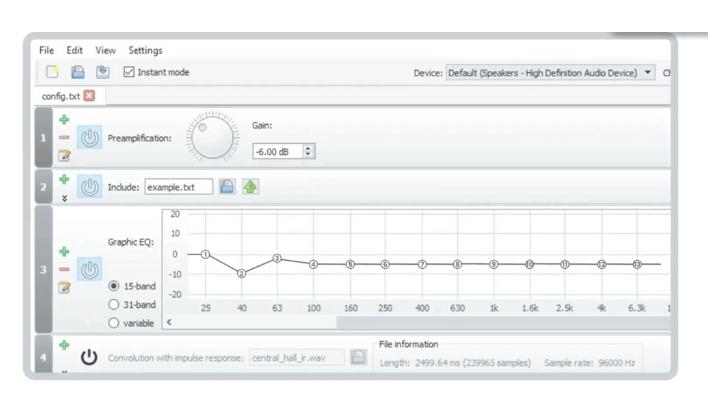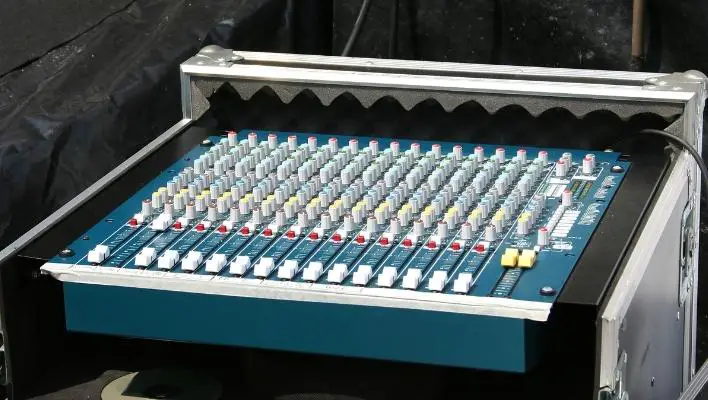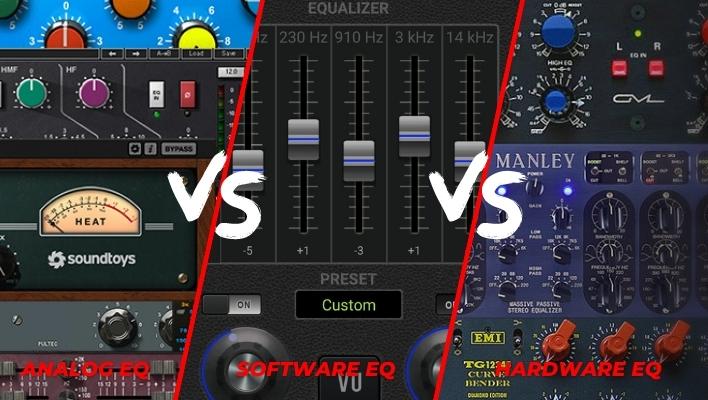Audio Equalization (EQ) is undoubtedly one of the most important aspects when it comes to audio editing and mixing. When done correctly, equalization can help to boost the quality of your audio, and it is also critical in attaining sound clarity and richness.
However, with so many types and versions of EQ available, it can be quite challenging to determine which one to use and why. The different kinds of EQ are intended to serve different purposes, and they each provide a distinct sound and unique capabilities.
This article will highlight the contrasts between Software EQ vs Hardware EQ vs Analog EQ and help you understands their strengths and weaknesses. But even before that, let’s first discuss what audio equalization entails and how it changes the sound quality of your speakers and music in general.
What is Equalization in Audio?
For starters, audio equalization, famously abbreviated as EQ, is the process involved in adjusting the level of individual frequency bands in an audio signal. Simply put, you can use EQ to boost or reduce (attenuate) the range covered by different frequencies within an audio signal.
In most cases, equalization is used to modify audio signals that feel unnatural. For instance, if a song was recorded in a place that exaggerates high frequencies, you can use an equalizer to bring down those frequencies to an acceptable level. The device used to achieve all these is known as an equalizer. So are equalizers necessary?
Audio equalizers are critical in boosting or cutting a specific frequency band within the frequency band. Boosting implies adding more to the frequency, while cutting means removing an issue from the same frequency.
In addition, equalizers are important in eliminating irritating frequencies, amplifying melodious frequencies as well as harmonizing different pieces in an audio mix. In addition, you can use an equalizer to eliminate unwanted sounds, such as troublesome low-frequency sounds produced by a guitar amplifier.
Equally important, equalization is used to boost certain voices or instruments as well as enhance particular components of a tone. Equalization is also important for applications that require you to make the sound more intelligible and reduce feedback (howling). Typical applications include radio and recording studios, production control applications, and live sound reinforcement applications.
Types of EQ
Equalizer plugins are generally classified into two broad categories i.e. analog vs digital equalizers. Both digital and analog EQs help to manipulate (cut or boost) different frequency bands, thereby allowing you to customize your audio settings.
The two forms of EQs are used in a range of audio equipment, including AV receivers, subwoofers, AV preamps, among others. The debate of which is more dominant between digital and analog equalization is often unresolved, and that’s one area that this article has come to rescue.
Ideally, both digital and analog equalizers provide unique characteristics and functionalities that make them ideal for a specific application. So, to determine which form of equalization is best for you, or which EQ is better for specific music mixes, you’ll first need to understand what makes each equalization type unique.
Digital EQs
Sound engineers rely heavily on the ability to modify and customize their recordings, and one way to achieve this is by utilizing digital EQs. With the advancement of technology in the world of audio, digital EQs have provided engineers and music producers with a convenient way to amend a range of frequency issues.
The best thing about digital EQs is that they are more accurate and they allow for precise changes. In addition, most audio applications include at least one or more different types of digital EQs, which make it easy to affect changes to your mixes as well as correct any frequency issue.
However, unlike analog EQs, which come with physical dials, digital equalizes do not include physical controls. The latter store equalization settings in several frequency profiles that let you boost or cut a specific sound frequency.
Digital EQs offer both software and hardware-based EQs, with each form coming with a set of different rules that need to be followed while’ EQing’. That said, let’s explore the major differences between software and hardware EQs as well as how they compare with their analog counterparts.

What is Software EQ?
Software EQ is a form of audio equalization done using different computer programs such as the Equalizer APO. Because of this, software-based EQs are by far the most commonly used equalization system, and this can be attributed to their easy accessibility.
In addition, software EQs facilitate finer control of audio frequencies, and this is critical if you are trying to correct specific aspects of your sound signal. And unlike analog EQs, which tend to be somewhat general, software EQs are quite specific.
This means that you can select specific frequencies and position the sliders at exactly the frequency range you’re working with. Furthermore, the ability to compress digital signals using predetermined algorithms allows for the shrinkage of the signals, thereby simplifying equalization stages.
The best thing about software EQs is that they allow the operator to visually monitor how the amplitude of EQed frequencies is being adjusted. This means you remain in total control of the manipulation and balancing of frequencies between and within frequencies.
A good example of a software EQ tool is the Audyssey MultEQ room correction tool that is used in Denon and Marantz receivers. This room equalization tool allows the users to calibrate their AVR to be in line with the room in which it is used. It achieves this by computing the individual frequency response for each channel, thereby facilitating easy room tuning.
Advantages of software EQs
- Software EQs rarely include noise throughout the frequency range
- The equalization process is somewhat gentle
- Less sound distortion
- One of the most flexible equalizers used in music production and other related applications
Disadvantages of software EQs
- Using software EQs improperly can make your mixes much worse
- In addition, excessive boosting can introduce digital distortion

Overview of Hardware EQs
Hardware EQ, just like the name suggests, is a type of equalization that is done over hardware such units as DSPs (digital sound processors). For anyone who doesn’t like software EQs but isn’t willing to go the analog way, the hardware versions are a great alternative.
The versatility of hardware EQs gives the operator limitless equalizing possibilities. And much like software audio equalizers, hardware EQs help to improve the quality of your sound while ensuring that it better matches your environment.
The primary difference between software EQs and hardware EQs is that while the former use computer programs to solve frequency problems, the hardware ones use hardware-based tools to perform the same functions.
Advantages of hardware EQs
- Best for problematic frequencies
- Like software EQs, hardware equalizers allow you to adjust performance for individual frequencies
- Some hardware EQ does a great job of manipulating the frequency range than cheap software EQs
Disadvantages of hardware EQ
- Prone to noise
- Usually more complex than software EQs

Analog EQ
Analog EQ, just as the name suggests, is equalization performed on analog signals using analog tools. These devices use physical sliders and dials to allow the operator to have precise control over the frequency range.
The most unique aspect of analog equalizers is that they are designed to boost or cut as much signal as their internal gain can allow. In addition, you can use an analog equalizer to cut or boost a specific frequency without necessarily having to tamper with anything else. Because of this, it is easy to see why mixing with analog equipment provides a much fuller sound.
Analog equalization uses multiple-band equalizers that allow operators to tweak the sound output of loudspeakers and headphones. The process utilizes a fully analog device that you’ll need to hook up between your source—including a preamp, digital converter, or a preamp – and your AV receiver, headphone amp, or even an integrated amp.
In addition, analog equalizers utilize different controls to forward or tame certain tones within a sound mix. For instance, you can dial the 2- and 8-kHz control to try and tame any harsh recordings that might find their way to your music tracks. Alternatively, the 400- Hz and 2- kHz controls are ideal for sound mixes that require you to either forward or lower certain vocals to suit varying application needs.
Analog equalization is especially useful in headphones applications. For instance, you can use your equalizer to boost up the bass/ add deep bass and suppress brightness by lowering it down to 8 kHz. That’s not all. Today’s technology has made it possible for developers to infuse modern features in analog EQs, thereby allowing them to meet modern technology’s demands.
Advantages of analog EQs
- The original signal quality of the mixes stays intact even after making corrections.
- More affordable
- Easy to use— just need to turn a few knobs, and you’re good to go
- Uniform results
Disadvantages of Analog EQs
- Lacks the precision and fine-tuning of their digital counterparts
- Limited settings
- Analog equalizers might add some kind of noise or distortion, which might not be pleasing to the ears
Which EQ is Better—The Verdict
Audio equalizers are powerful tools for transforming sound quality, but unfortunately, many people don’t know how to utilize them properly. In fact some may end up ruining the sound further, so if you’re unsure about your specific EQ application, it is best to consult an expert.
All these three EQ types are viable options for remodeling and shaping frequency bands of any given mix. In addition, all of the equalization methods will draw you closer to the sound quality you’re after, but you may want to consider the sound objectives you need to accomplish.
In addition, when using any of the above equalization methods, your first goal should be to improve sound and avoid doing any damage to sound quality as much as possible. The best way to achieve this is by listening to your sound before and after EQing.
If you have a trained ear, you should be able to quickly pick up the difference between original and EQed sound mixes. In addition, seasoned listeners can easily tell when the sound frequency is well EQed or when the music is all hype and poorly mixed.
Most sound engineers and producers prefer to incorporate software EQs into their mixes, and it is for good reasons. Most software EQs offer a simplified the process of EQing, but the level of control needed might be overwhelming at first. However, once you get the hang of it, EQing with a software device becomes spontaneous and is undoubtedly one of the most effective methods of equalizing audio.
Hardware EQs are equally effective in audio equalization, but they shape your sound differently. Hardware-based equalizers are designed to offer unique sound quality and different mixing styles, so don’t hesitate to try out a few.
On the other hand, analog EQs are the best choice for tonal applications thanks to their ability to emphasize and attenuate the entire frequency range. Additionally, analog EQs tend to be more reliable and more affordable than expensive digital equalizers. What’s more analog EQs are considered to be the best in terms of musical appeal and the ability to simulate original circuitry.
But that said, don’t fear to experiment with these different types of EQ to determine which EQ is best for your music needs. The above points are just general guidelines, so for best results consider throwing everything out and experiment with them yourself. At the end of it all, it is up to the user and what they prefer to listen to.

